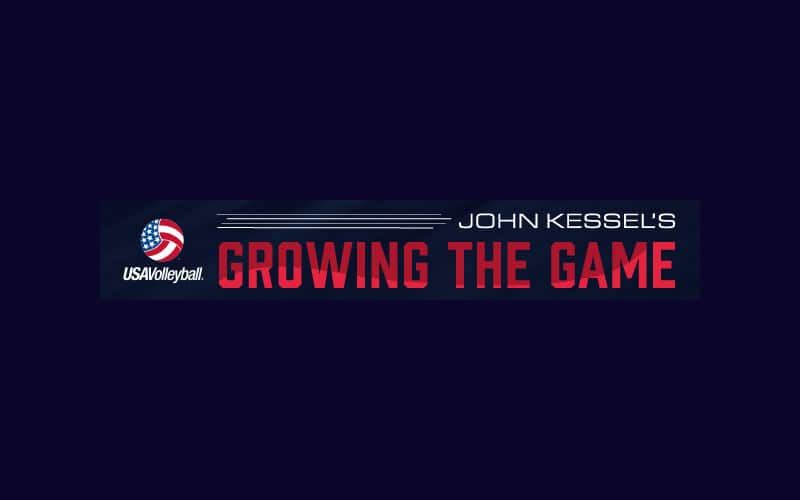
One of the things that I find fascinating is the "volleyball canyon" regarding the mental game. My amazement comes from when you ask a coach first, what percentage of the game do they think is mental - and they reply on the average, "eighty percent." Then I ask how much they feel they are training mentally in practice, and the response is on average "ten percent."
I also think this is why my coaching philosophy can be summed up in three words " Develop Amazing Leaders," as even these writings and suggestions are working to that end. Thus in my practices, my goals include as examples to:
- get my players to understand why a coach is doing what they are doing<
- teach where to serve themselves (and why) - so that during the match - you will never see me calling serving zones in a match
- understand and guide how they can impact the flow and speed of a match - so that by the end of the season, I seek that the captain/team can be calling the match
- hear and guide their thoughts and decision making - so that time outs go from coach input only, to player input/discussion by season's end.
So to those coaches reading this blog, you have seen, as part of the effort to grow the game, several books to read to better assist you as a leader of our sport into bettering the experience everyone has in our sport. That is a core concept within our sport on the court - to better the ball - and is no less important to everyone off the court. Today's reading suggestion, The Art of Strategy, will help anyone, including coaches and parents, on how the science of Game theory impacts every part of our lives.
Perhaps I should first quote Steven Levitt, coauthor of Freakonomics. I have raved about Levitt's book before, so when he says "This wonderful book proves that game theory is too interesting and important to be relegated to arcane academic journals. I am hard-pressed to think of another book I've read that can match the combination of practical insights and reading enjoyment in The Art of Strategy. I liked it so much I read it twice" - I react.
Game theory is a relatively new science - some seventy years in existence is all. You might have seen it first in "The Beautiful Mind" movie. There have been two Nobel prizes awarded in the science - in 1994 to Harsanyi, Nash and Selten, and in 2005 to Aumann and Schelling. When you add in work in mechanism design and information economics, both closely game theory connected, we can add the 1996 Nobel Prize to Vickrey and Mirrless, the 2001 prize to Akerlof, Spence and Stiglitz and as recently as 2007 to Hurwicz, Maskin and Myerson. I share these names so you might google more on their writings, after you get through reading Avinash Dixit and Barry Nalebuff's book, who also authored Thinking Strategically in 1991.
If I have not scared you off yet by noting all this Nobel Prize stuff, I think you will find this book a great guide to being a better coach. Unlike their first book, this new one not only brings to light new research, applications and development in game theory - it is far better in weaving how cooperation, not just competition, to make the best strategic decisions. The author's first preface in 1991 wrote "strategic thinking is the art of outdoing an adversary, knowing that the adversary is trying to do the same thing to you." They now add "It is also the art of finding ways to cooperate, even when others are motivated by self-interest, not benevolence. It is the art of convincing others, and even yourself, to do what you say. It is the art of interpreting and revealing information. It is the art of putting yourself in others' shoes so as to predict and influence what they do." Indeed, Nalebuff even coined the word, and wrote a book in 1996 called Co-opetition.
Some might think, from my previous reading suggestions, like Predictably Irrational, that it is not possible to bring game theory into the mix. The authors write "some of the most exciting new insights have come from the recent advances in behavioral game theory, which incorporates human psychology and biases into the mix and thus adds a social element to the theory. As a result, game theory now does a much better job dealing with people as they are, rather than as we might like them to be. We incorporate these insights into our discussions....game theory is too interesting and important to leave to the academic journals. The insights prove useful in many endeavors - business, politics, sports, and everyday social interactions. Thus we translated the important insights back into English and replaced theoretical arguments with illustrative examples and case studies."
When a book by page five is showing what game Microsoft CEO Steven Ballmer is using in job interviews, and by page eight, has asides called "Trip to the Gym" (thanks to Financial Times book critic Andrew St. George saying back in 1991 "it is a trip to the gym for the reasoning facilities"), and their #3 strategy tale as "The Hot Hand," -- I am hooked. I know it is part of a coach's way of adding deliberate practice to our training, so we can better train our athletes and interact with those we are impacting.
